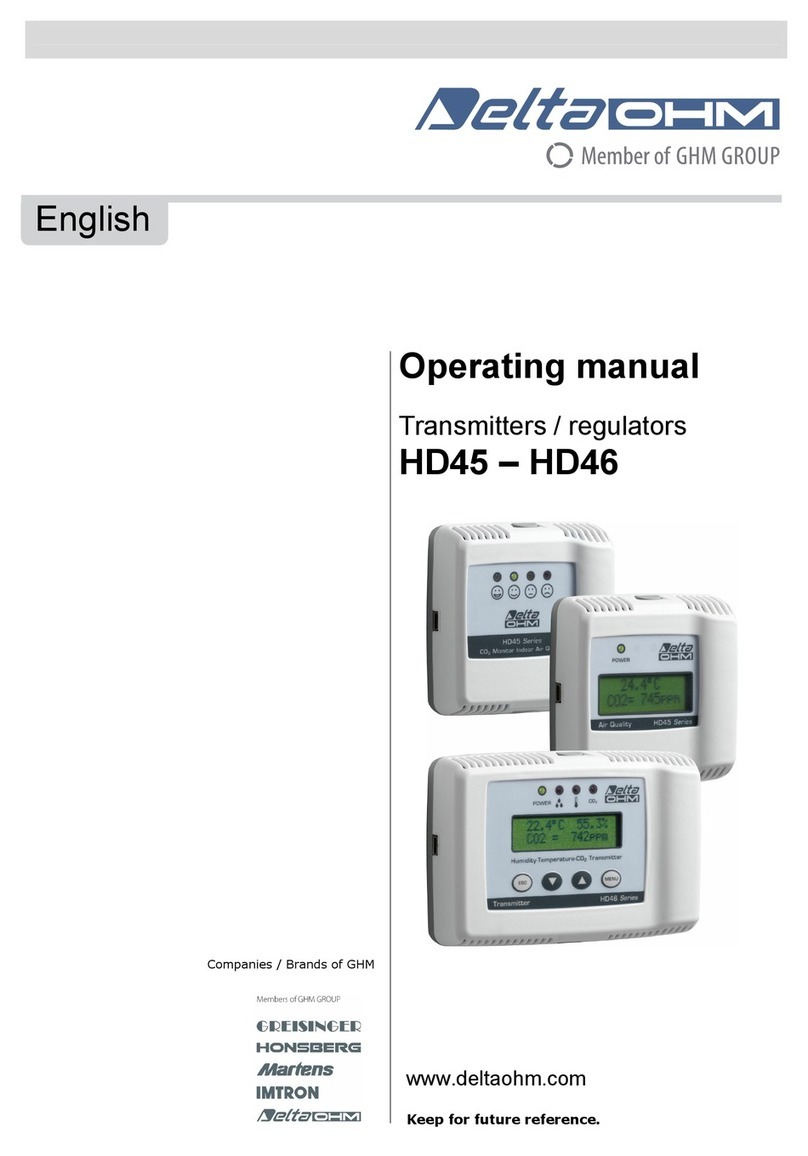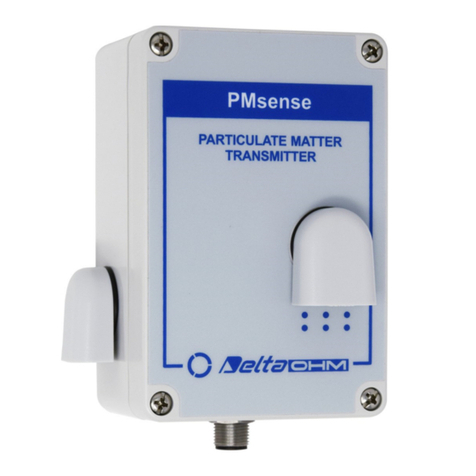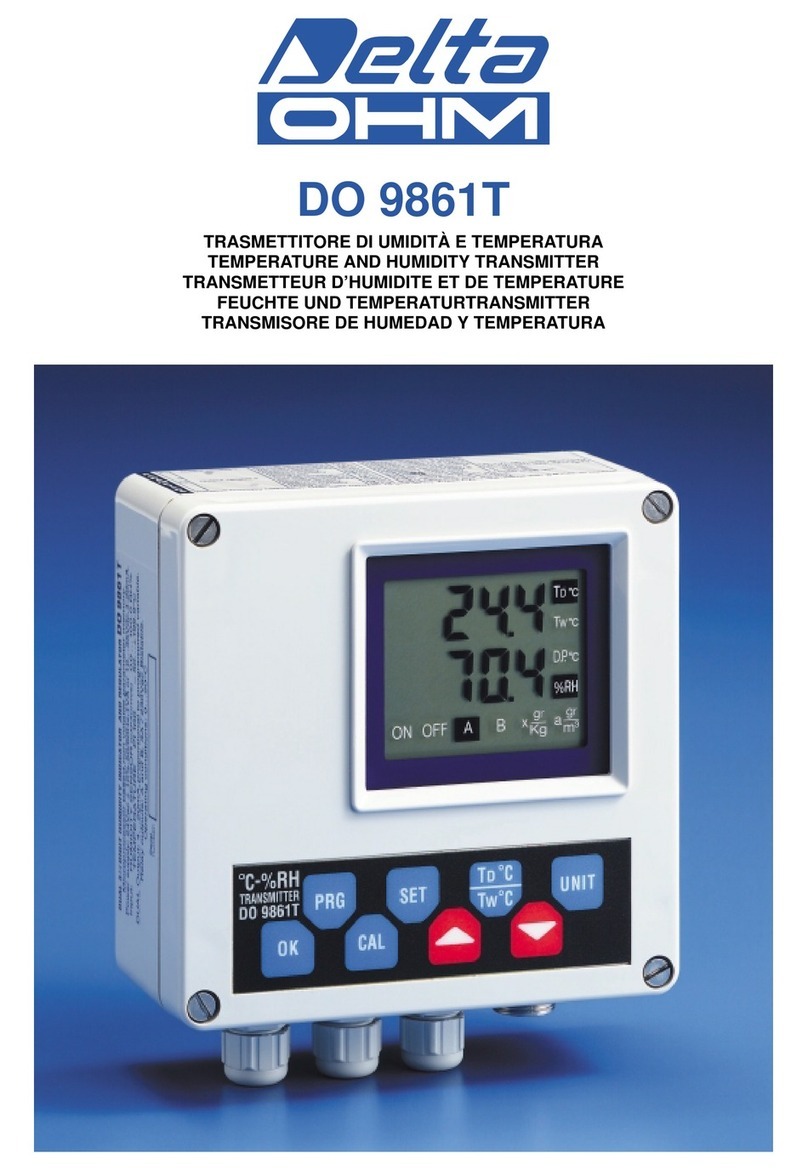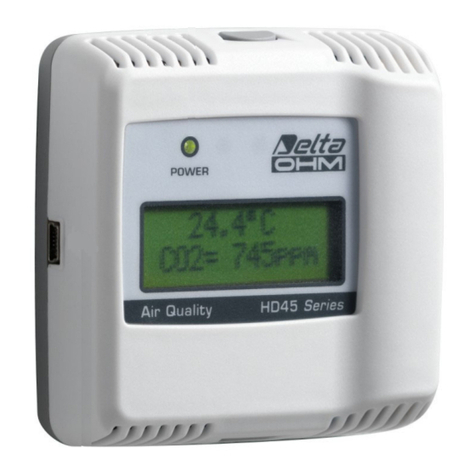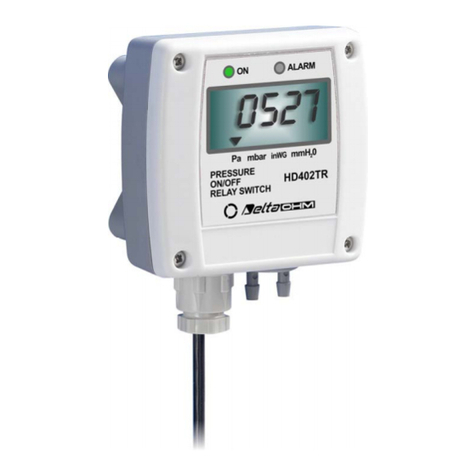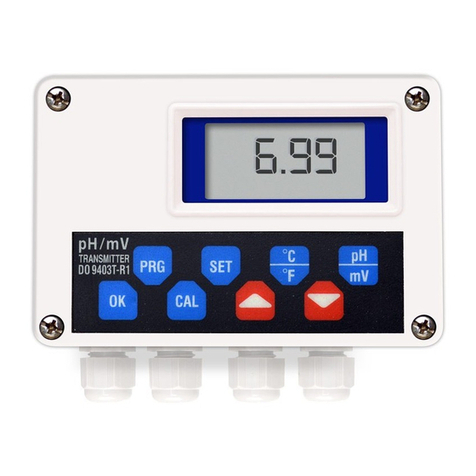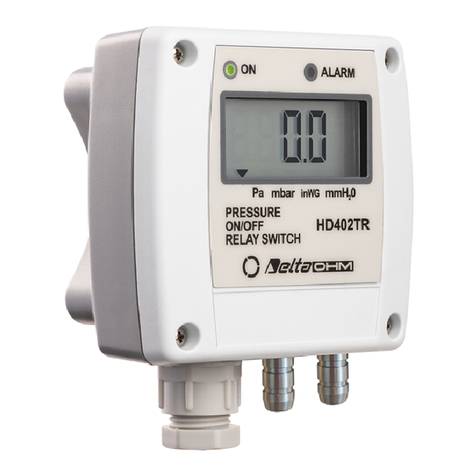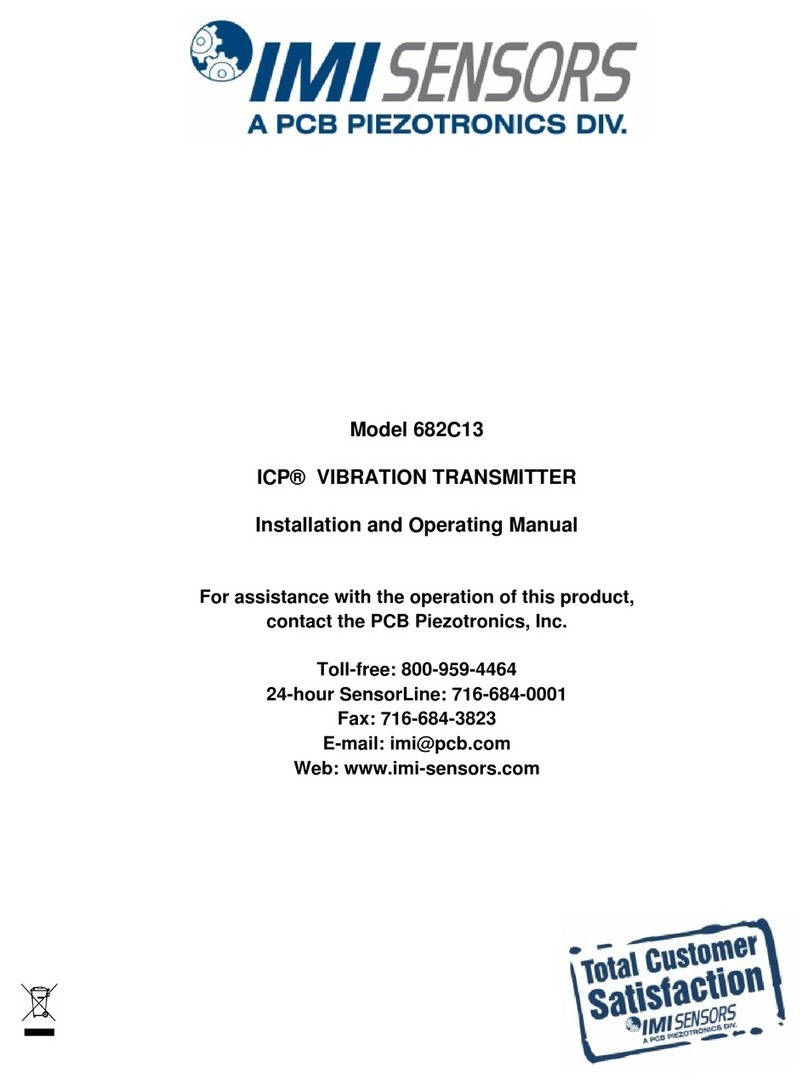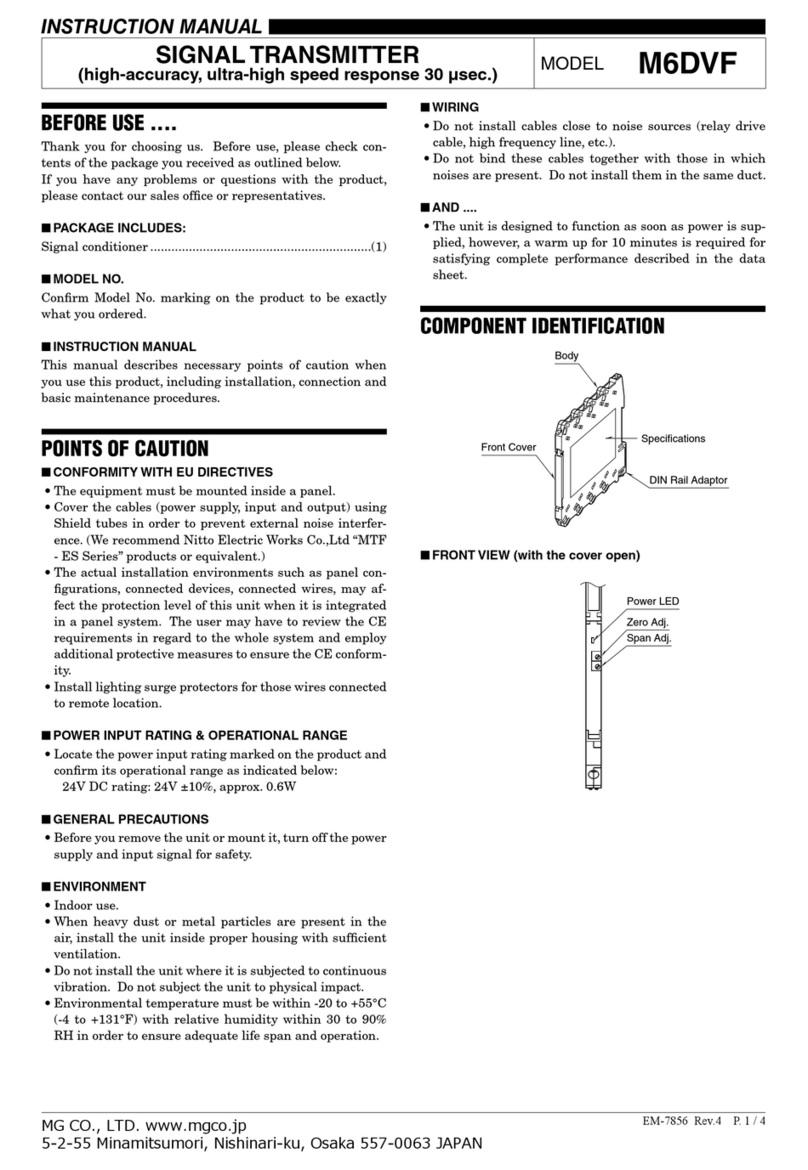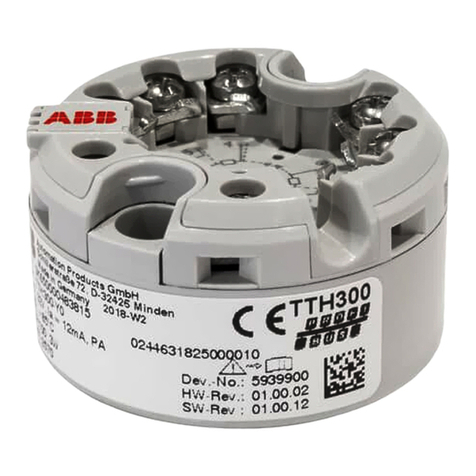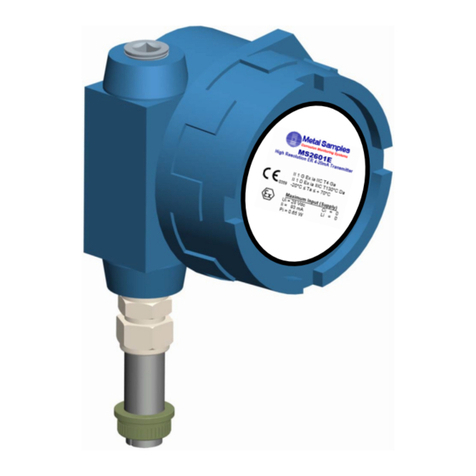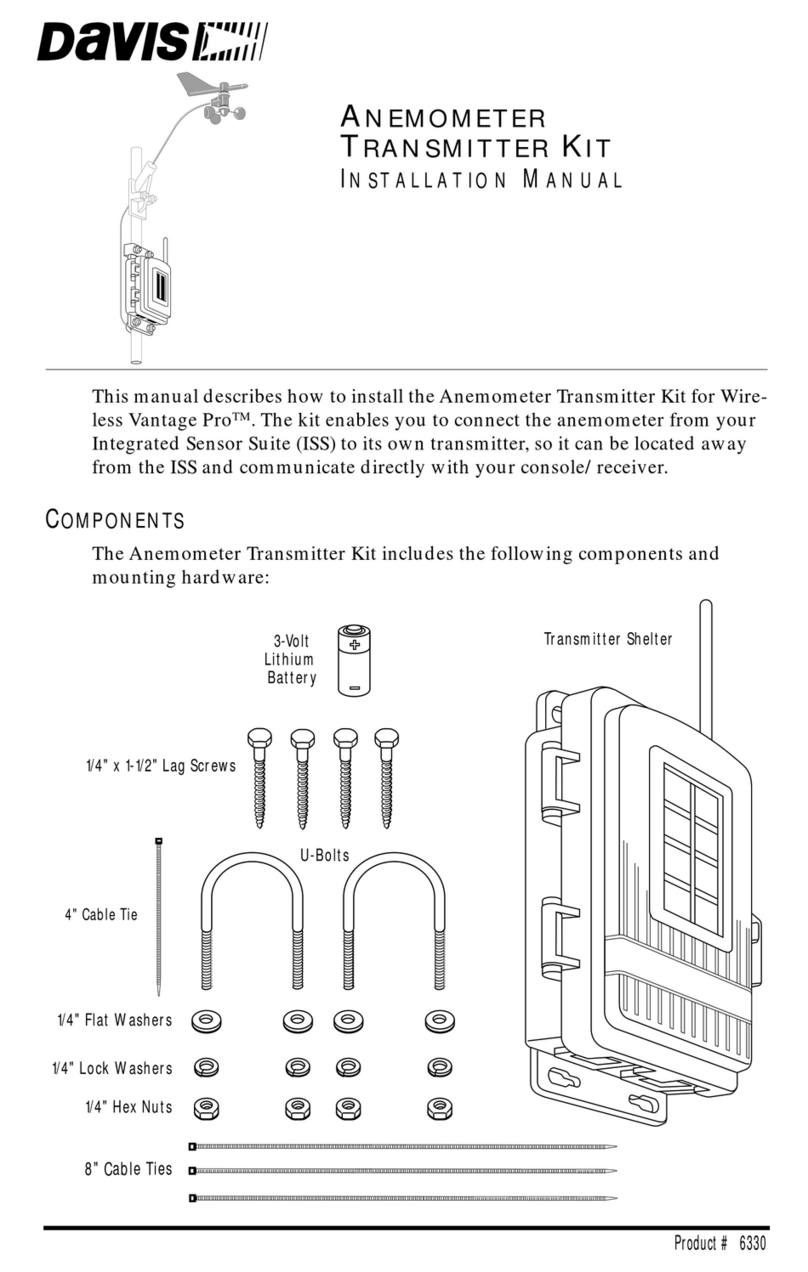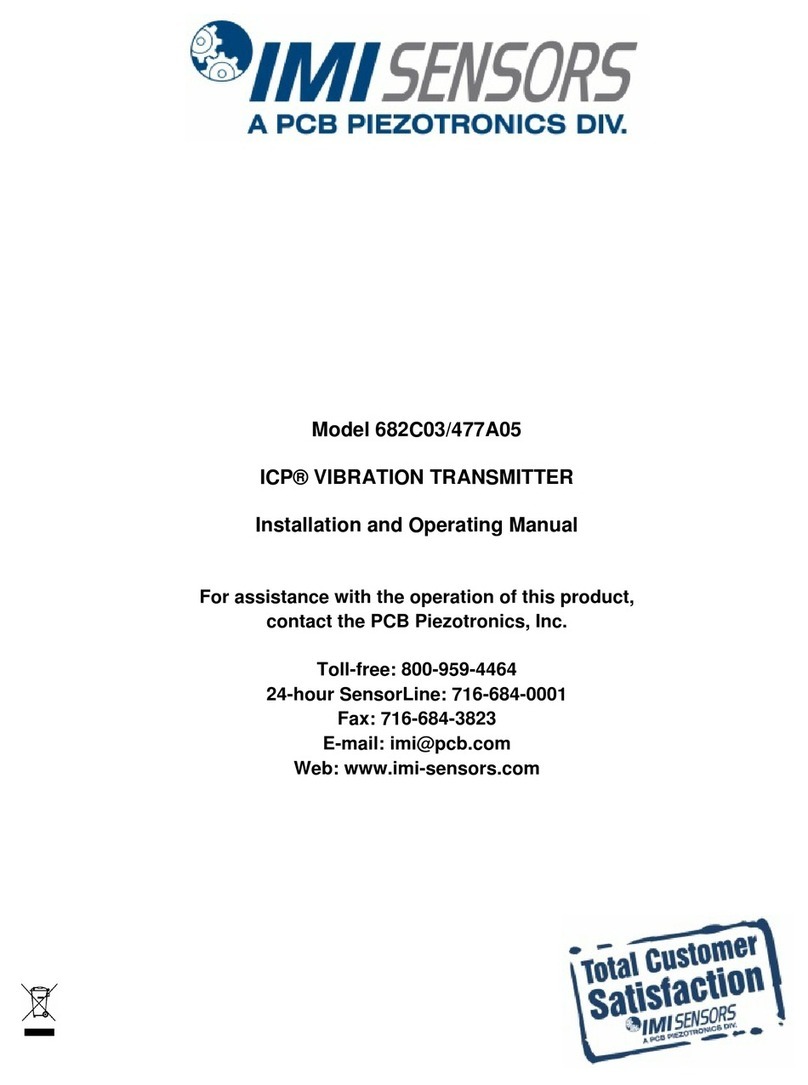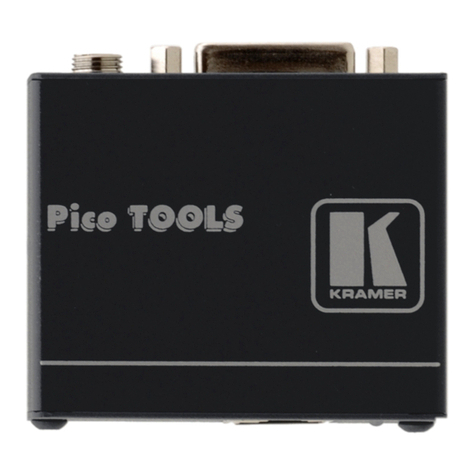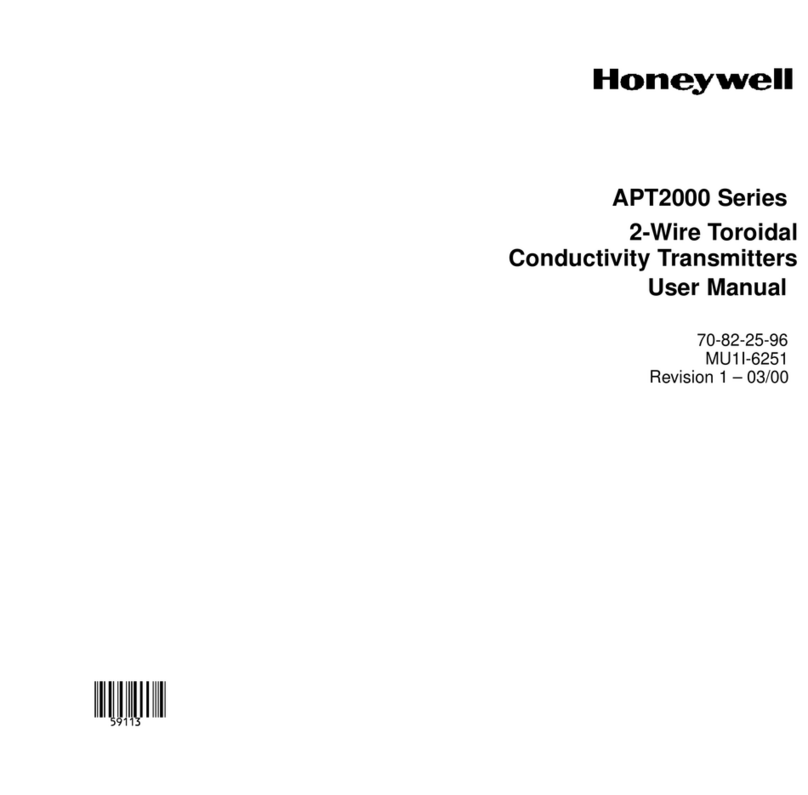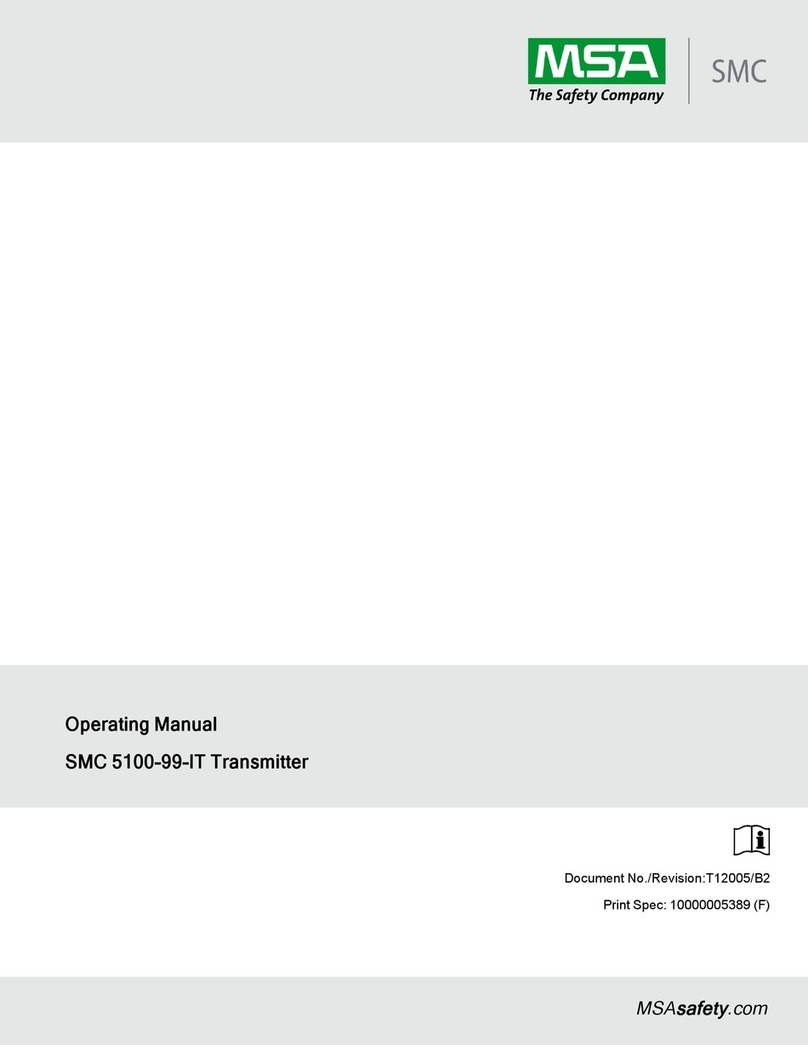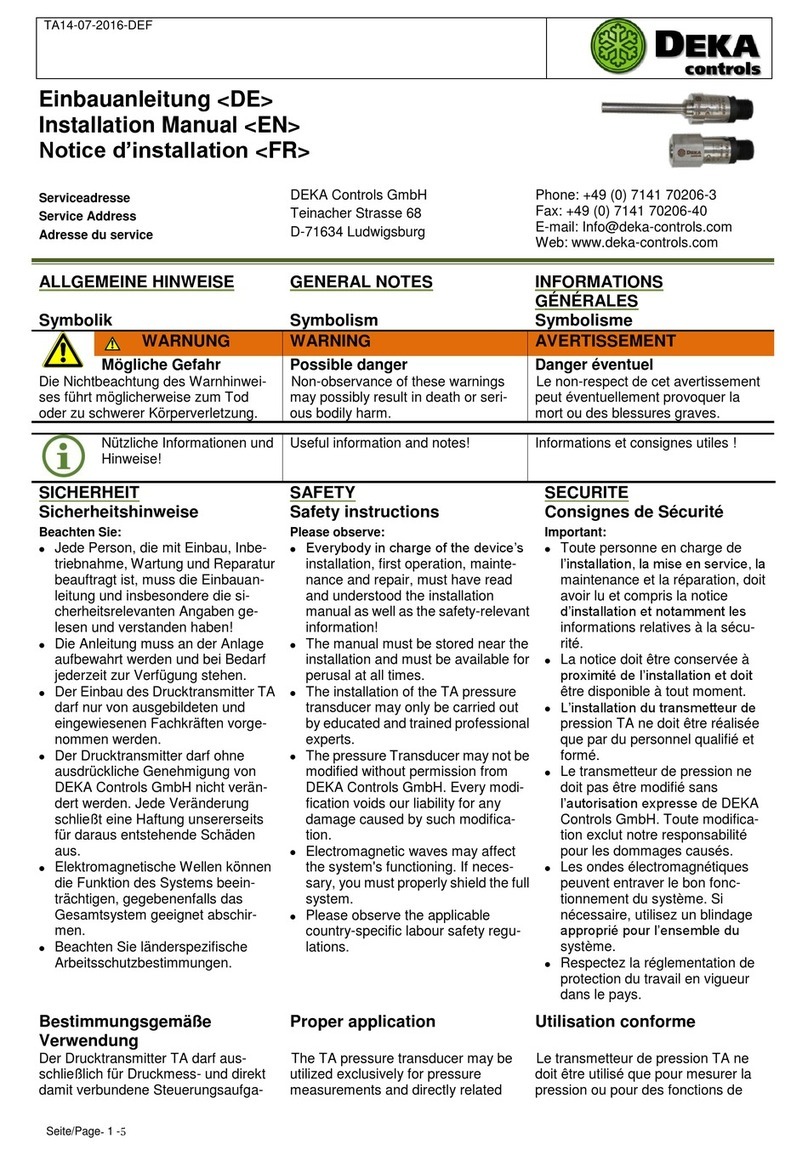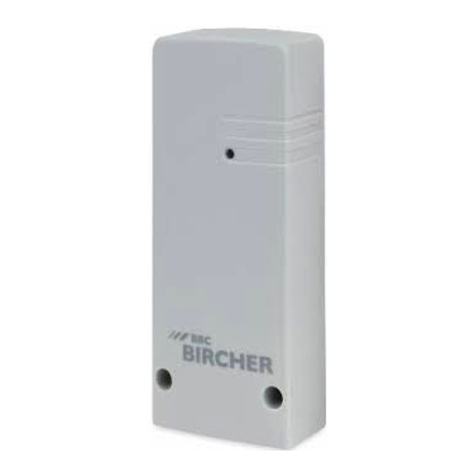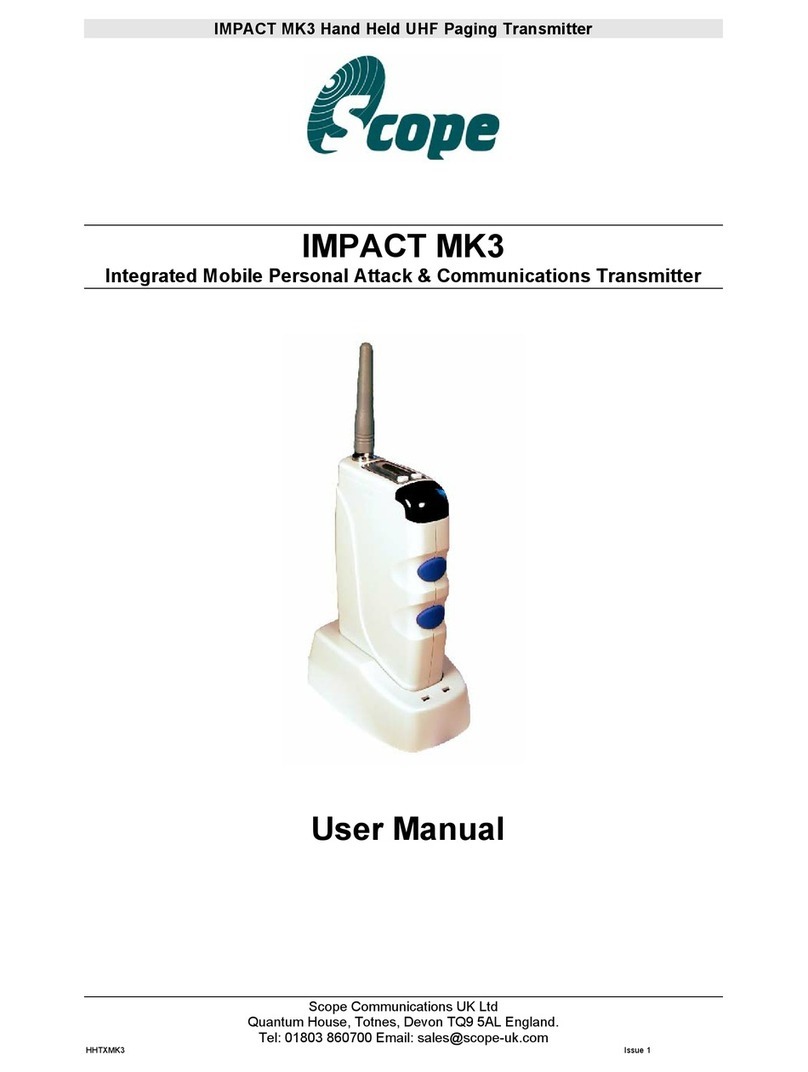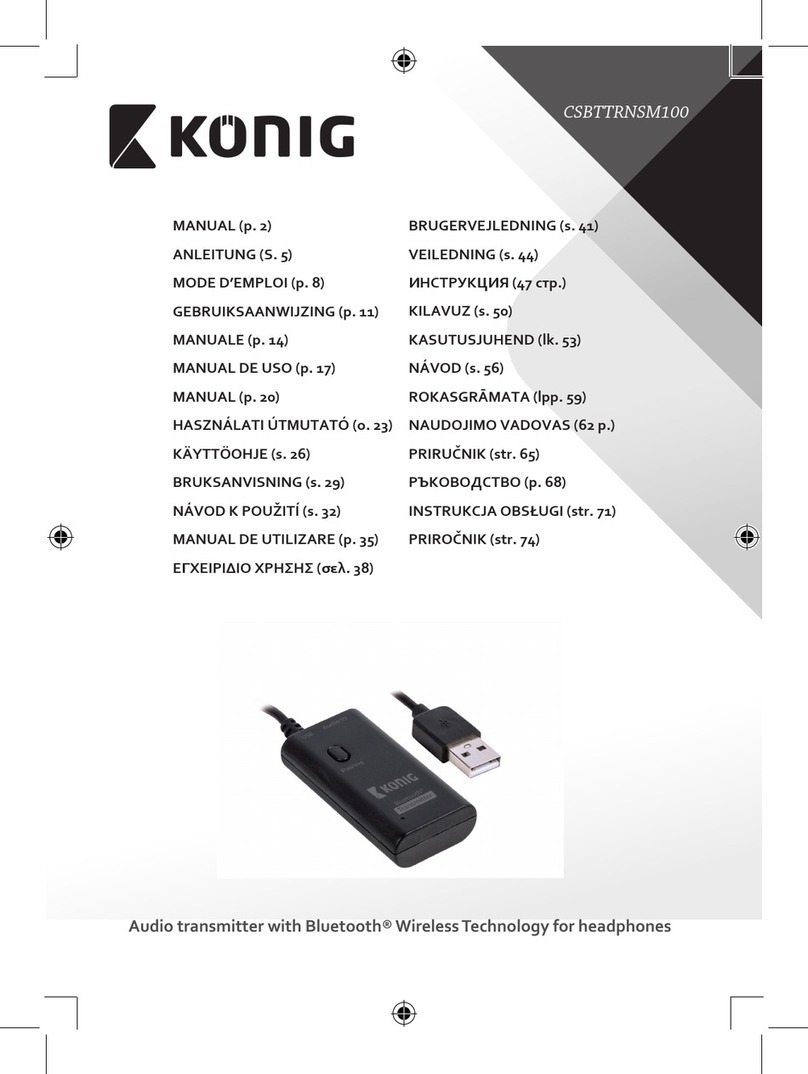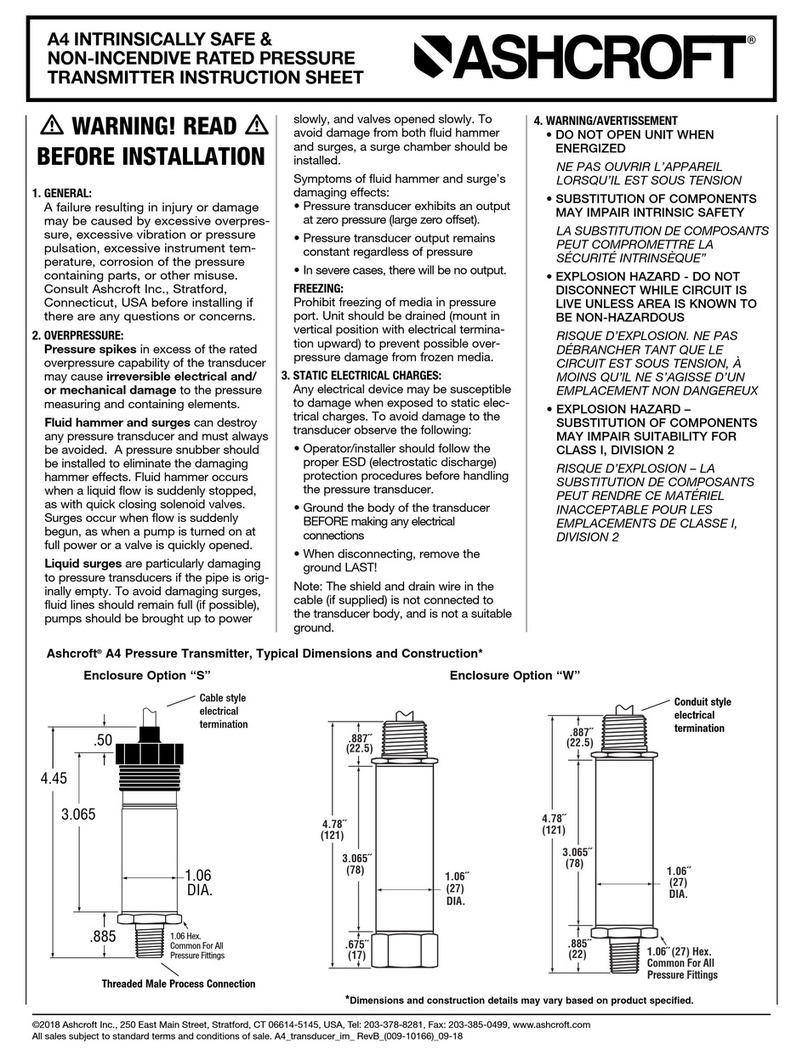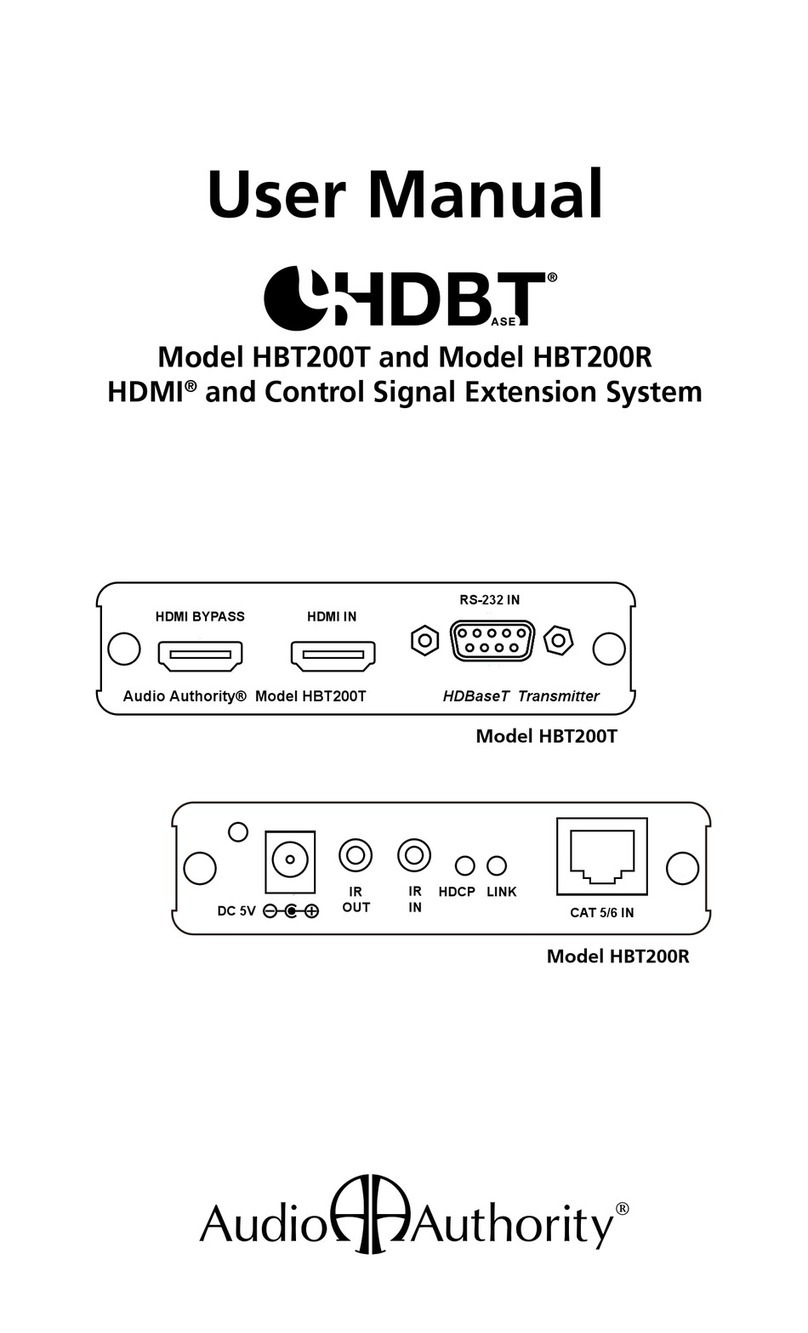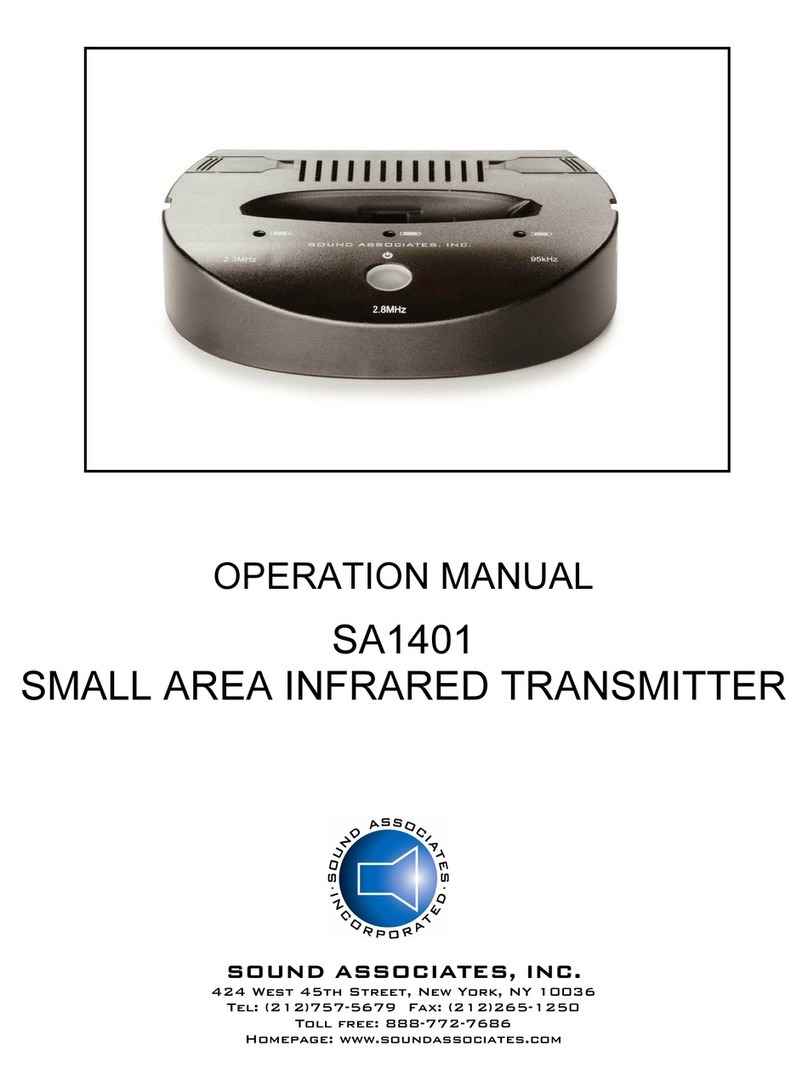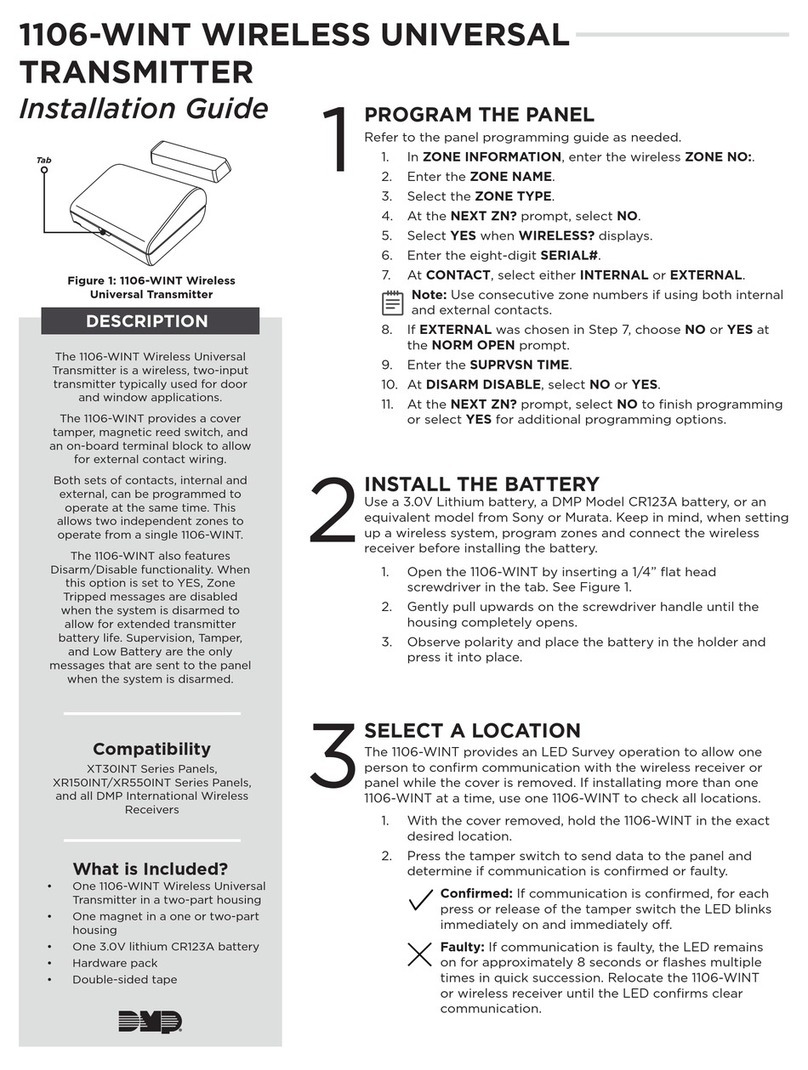HD9408.3B - 11 - V1.2
To add or remove an offset to the minimum value of the output signal, so that to pass
from the range 0…5 V or 0…20 mA to the range 1…5 V or 4…20 mA and vice versa,
use the serial commands CAOE (adds the offset) and CAOD (remove the offset). The
default mode is without offset.
The details on the use of the serial commands are described in paragraph 4.5.
4.5 SERIAL COMMANDS OF DELTA OHM PROTOCOL FOR HD9408.3B.1 AND HD9408.3B.2
All the operating parameters can be set by connecting the transmitter to the PC and
sending, via a standard serial communication program, the serial commands of the
Delta OHM proprietary protocol.
The Delta OHM proprietary protocol can be used with RS232, RS485 and RS422 digital
outputs. If the RS232 output is used and the PC has only USB ports, place between
the PC and the instrument a RS232/USB converter. If the RS422 or RS485 digital out-
put is used, place between the PC and the instrument a converter from RS422 or
RS485 to RS232 or USB. For the wiring diagrams, see chapter “INSTALLATION”.
If a USB converter is used, it is necessary to install the relevant USB drivers
in the PC.
NOTES ON THE INSTALLATION OF UNSIGNED USB DRIVER:before installing unsigned USB driver into
operating systems starting from Windows 7, it is necessary to restart the PC by disabling the
driver signing request. If the operating system is 64-bit, even after installation the request of
driver signing have to be disabled each time the PC is restarted.
PROCEDURE FOR SETTING THE PARAMETERS:
1. Connect the transmitter to the PC according to the selected digital output (the fac-
tory-set digital output is RS485) and power the transmitter. The transmitter always
starts to operate with the set operating protocol.
2. Start a serial communication program, as Hyperterminal for instance. In the pro-
gram, set the COM port number to which the transmitter is connecting and set the
communication parameters the same as those of the protocol currently operating in
the instrument: “57600 8N2” for proprietary protocol, “19200 8E1” for MODBUS -
RTU (default settings, the MODBUS -RTU parameters are configurable), “4800 8N1”
for NMEA.
3. If the set operating protocol is different from the Delta OHM proprietary protocol
(the factory-set protocol is MODBUS-RTU), send the command ||| (sequence of
three 124 decimal code ASCII characters followed by the Enter key). The trans-
mitter replies with the sequence &|.
4. Within 10 seconds from the previous command, send the command @(64 decimal
code ASCII character followed by the Enter key) to confirm the switch to the Delta
OHM proprietary protocol. The transmitter replies with the sequence &|. Switching
to the Delta OHM proprietary protocol, the previous communication parameters
(baud rate, data bits, parity and stop bits) are maintained.
Note: if the transmitter does not receive the command @within 10 seconds from
the command |||, the previous protocol is automatically restored.
5. Send the command CAL USER ON.
Note: the command CAL USER ON is disabled after 5 minutes of inactivity. The
command is necessary only for the configuration writing commands, it is not nec-
essary for the configuration reading commands.




















